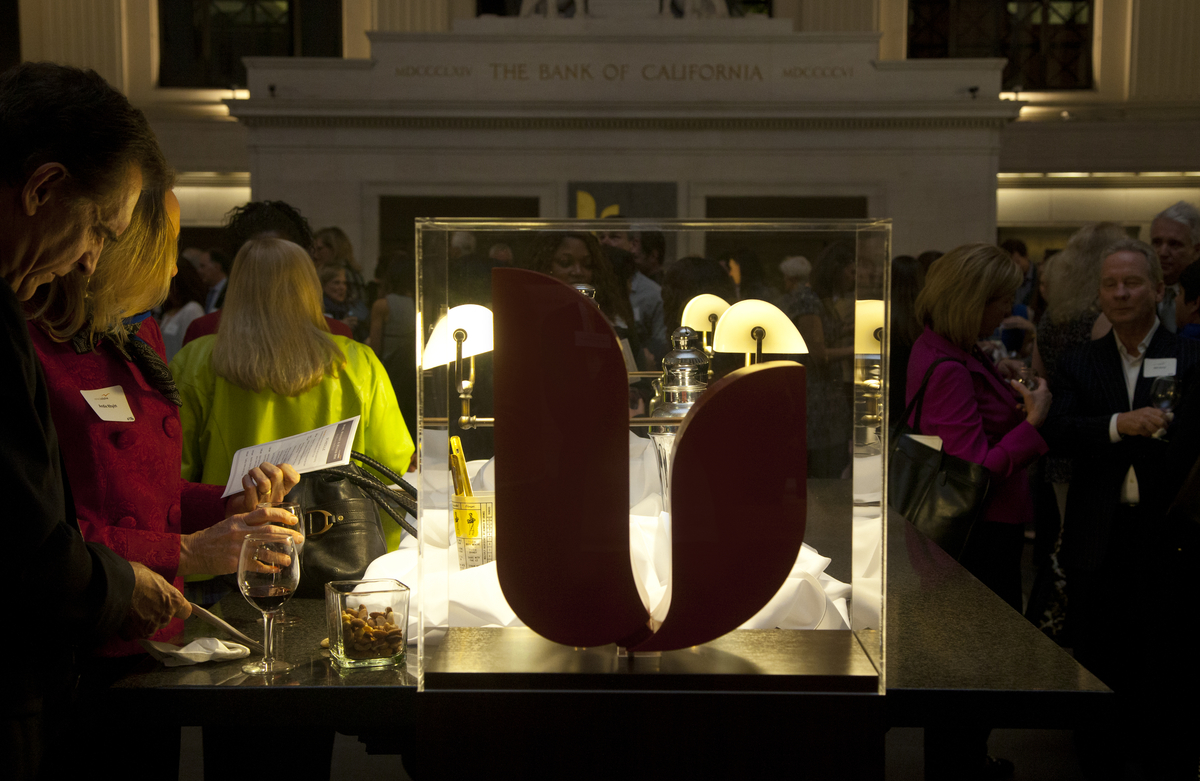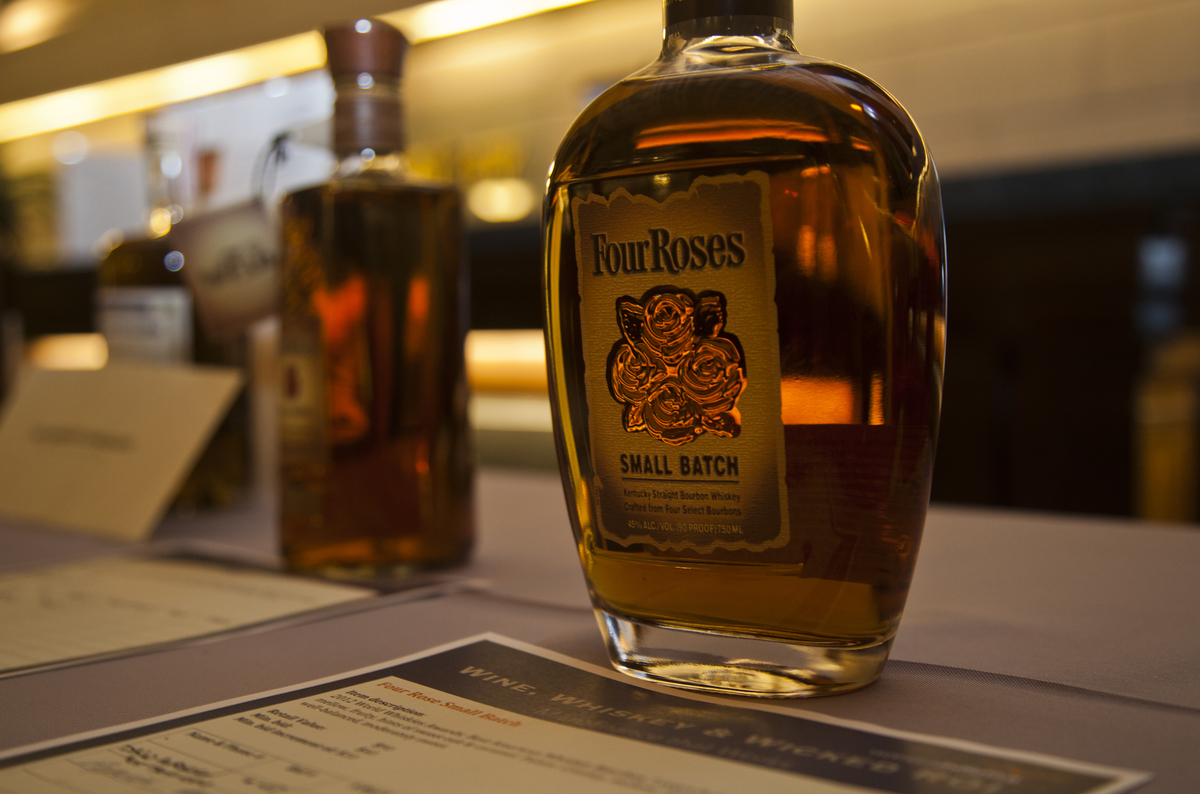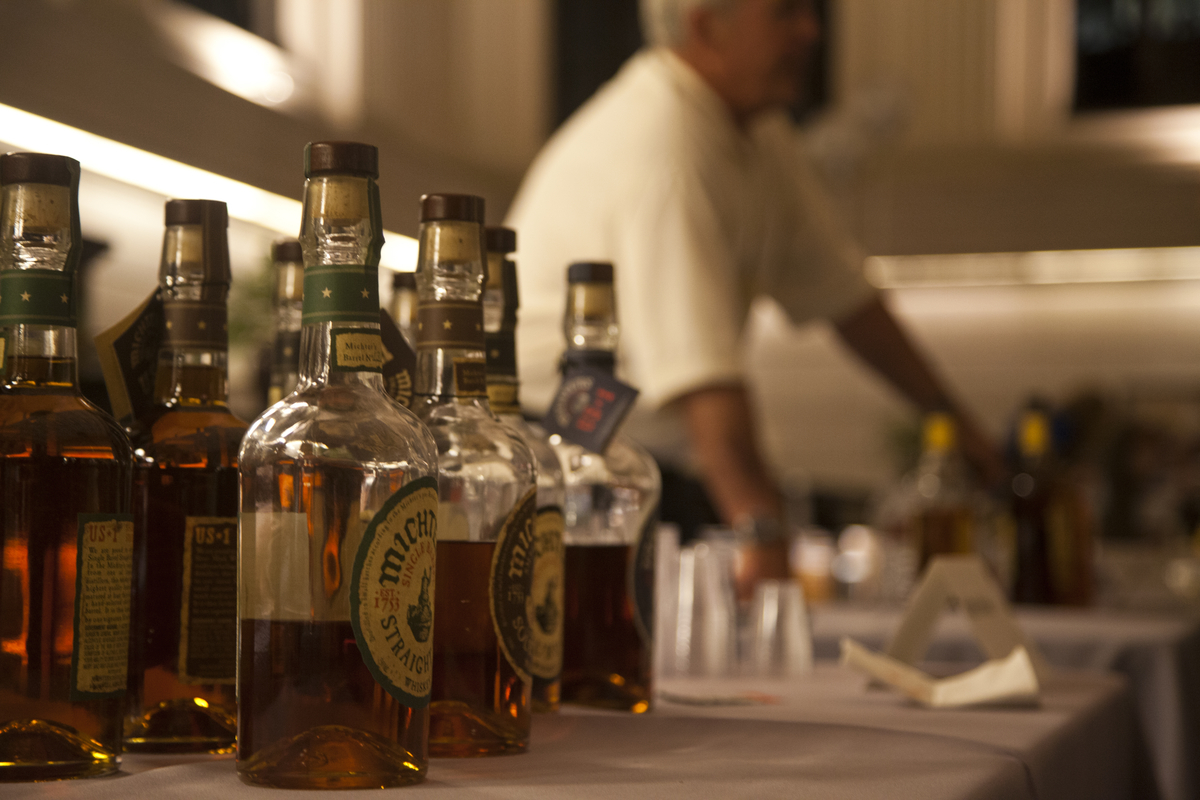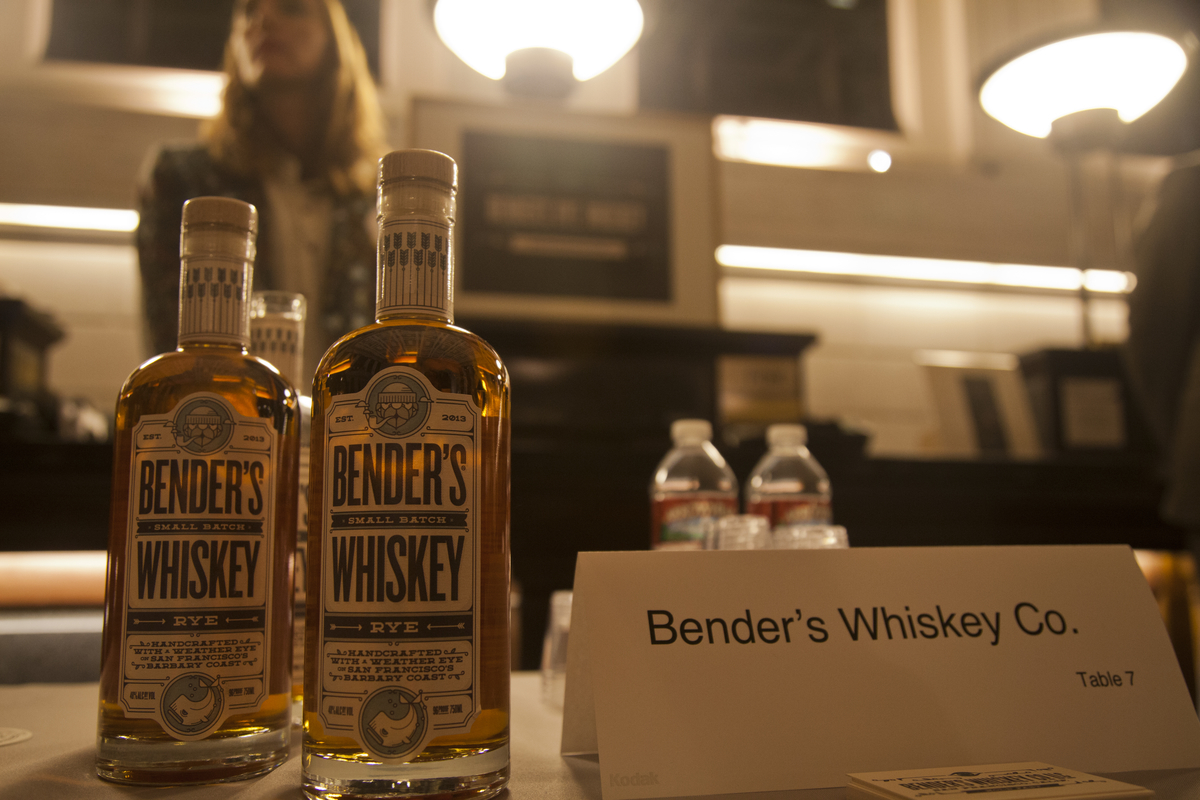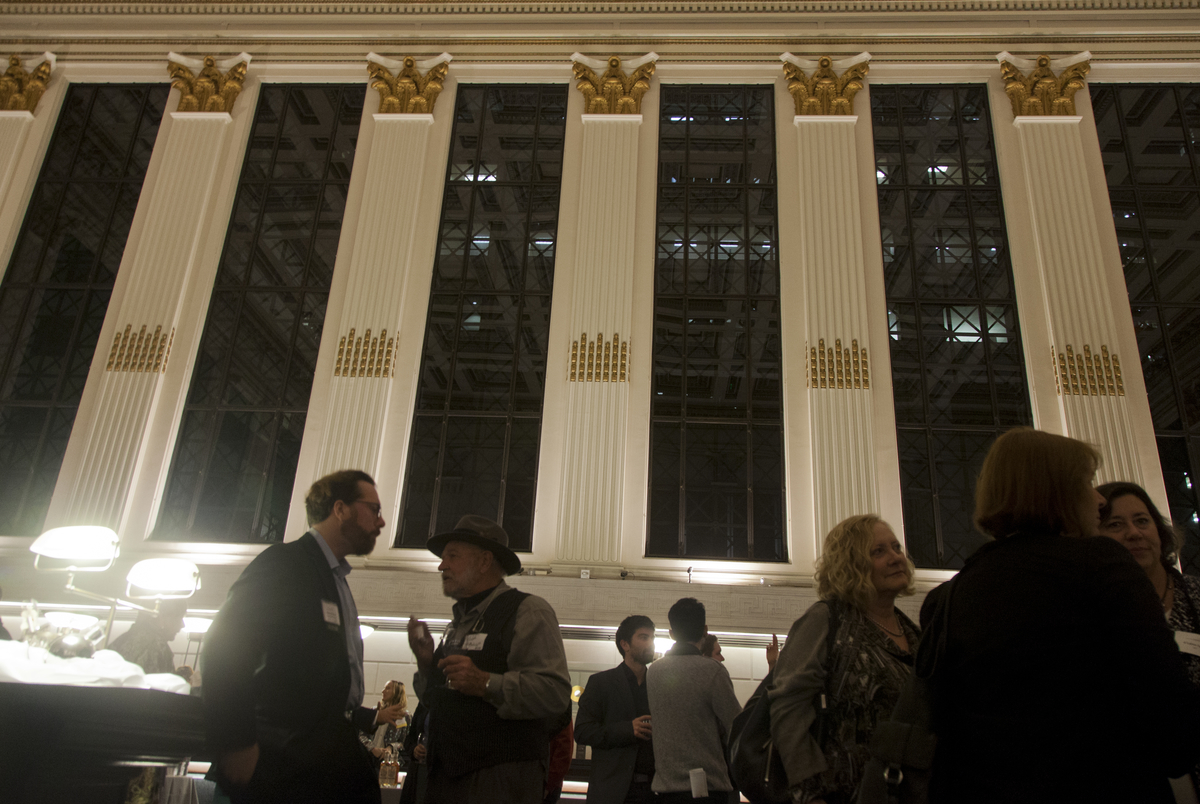Women's Initiative Wine & Whiskey Event
Photo by Stephanie Skinner
On Wednesday November 13, a couple hundred of people filled the historic Banking Hall at 400 California street in support of the Women's Initiative for Self Employment. People happily mixed and mingled as they sampled wine and whiskey from a number of sponsors. Four Roses, Mitcher's and Compasbox all poured from their extensive whiskey lines. St. George poured their Breaking & Entering Bourbon, Dry Rye Gin and Absinthe. Bender's Whiskey Company, based on Treasure Island was pouring samples of their Bender's Rye whiskey. The event bar was expertly staffed by Romina, the General Manager of Nihon Whisky Lounge, and featured a number of classic whiskey cocktail. I tried their version of a Sazerac, made with Bender's Rye Whiskey and St. George's Absinthe, which mixed together very nicely.
The main program for the evening was emceed by San Francisco's District Attorney George Gascón, and his wife Fabiola Kramsky. The highlight of the evening was a talk by Atrid Lopez, a Women's Initiative graduate and owner of Elite Sports. She shared how the training she received from the Women's Initiative helped her and her family start and successfully run their business since 1989. After Astrid spoke, her son, Ivan Lopez shared about how through his family's success he now owns and operates Artillery Apparel Gallery, a hybrid art gallery/retail space that features art and clothing from local designers and artists. The Lopez family is a great example of how empowering women to become small business owners not only helps them and their family but also ripples outward to the surrounding community.
Photo by Stephanie Skinner
The event was able to raise over $40,000 which will go towards funding the next cohort of women who sign up to take their training on how to successfully run a small business. I for one was happy to participate in the event and was glad to see local wine and spirit produces supporting the next wave of small business owner.
Photos by Stephanie Skinner

